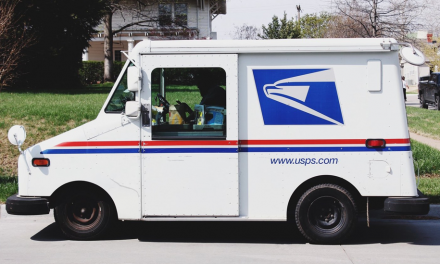
Donahoe: US mailing industry "too fragile" for major rate increase
The mail industry in the United States now appears to be “too fragile” for the US Postal Service to raise its postal rates by above-inflation amounts, US Postmaster General Patrick Donahoe said on Wednesday. Speaking at the latest quarterly meeting of the USPS with its major customers and industry associations, Donahoe declared that the Postal Service is dropping its legal battle with regulators to force a 5.6% rate increase.
Donahoe advised mailers that when it comes to future rate increases – the next one is likely to be January 22, 2012 – “plan on no more-than-CPI increases”.
“I just want to hear back from the Commission on what ‘exigent’ causes are,” Donahoe said, referring to the clause in US postal law that allows above-inflation rate rises when extraordinary or ‘exigent’ circumstances arise.
Mail volumes are now dropping much more quickly than ever expected, with single piece letter volumes dropping 35% and First Class Mail down 25% since 2006, while predictions are that First Class Mail volumes will slump a further 48% by 2020 to just 39bn pieces.
This week’s Mailers Technical Advisory Committee meeting at USPS headquarters in Washington DC was dominated by the bombshell announcement that responding to the volume decline, the Postal Service is redesigning its entire processing network to cut its 508 area mail processing plants down to less than 200 in a move expected to save $2.6bn to $3bn a year.
However, fears are that efforts to reign in the processing infrastructure to match the lower volumes could prove a “self-fulfilling prophecy”, with reduced service levels prompting further mail volume reductions.
Service standards are being revised in the light of the smaller processing network, and with the philosophy that mailers want consistency of service, rather than necessarily speed of delivery.
But on top of the downgraded service standards, postal executives are very concerned at the moment that significant price increases could further push major mailers away from using USPS towards alternative communication channels.
Even on mail products where postal rates do not currently cover costs, and regulators have ordered the situation rectified, Donahoe said he will look to avoid price increases.
“We’ll bring our overall costs down in order to address that,” said Donahoe. “I’m in no mood to raise my service prices – this industry is way to fragile at this point, and we don’t want to be upsetting the apple cart,” the Postmaster General said.
Costing review
Sparked by complaints that all too often USPS postal rates are based on institutional estimates of operating costs rather than the actual cost of providing postal services, the Postal Service is now carrying out a full review of the way in which it calculates its prices.
Hopes are to complete the review by November, and adopt a more “bottom up” process of setting postal rates and workshare discounts.
“There have been complaints in the postal world about our costing systems – it needs updating in this regulatory and economic climate, so we’re gathering feedback on that,” said USPS economist Jennifer Bradley, summing up some of the specific meetings of USPS executives with mailers’ groups this week.
Bradley said mailers want to see USPS making more use of its available resources to gauge accurate costing, including use of the Intelligent Mail barcoding systems, and also want to see much better explanations from the Postal Service when prices rise faster than inflation and wage costs.
“There will be winners and lowers (in the price review), and for some that face a higher cost, it will mean taking mail out of the system,” she said.
Service standards
Postal executives stressed at MTAC this week that changes to service standards associated with the Network Optimisation initiative are still at the concept stage, and there will be more discussion with industry prior to filing with regulators in October.
There were many concerns among mailers at MTAC about the changes ahead, particularly with how rapid the changes will be up to the end of 2012 and how the Postal Service intends to communicate those changes.
Yesterday, the USPS Inspector General published a report suggesting that the Postal Service could save up to $1.5 billion by relaxing its service standards by one day.
The report noted that the USPS processing network is set up to prioritise rapid handling of First Class Mail, but that diversion of its volumes into electronic alternatives “raises the question of whether the high speed service that some postal products receive is still worth its cost”.
“Some of the Postal Service’s largest business mailers have stated that they value consistency over speed and they would tolerate slightly slower service to save costs,” said the Inspector General’s report.
This appears to be the mindset within the Postal Service operations division, with USPS vice president of network operations Dave Williams telling reporters yesterday that: “In the past, network design was always dictated by that overnight service standard. We are reversing that paradigm so we can start out with the most efficient operating model.”
Williams said First Class Mail that was previously delivered between one and three days in the continental US would be revised to a two-to-three day schedule, fitting in with a new daily 20-hour sorting window starting from 8am each morning.
Entry windows are also being changed, so that mailers handing materials directly into the processing plants could still get an overnight First Class Mail service.
“Large commercial mailers that drop off items by 8am, we will be able to deliver that by the next day,” Williams confirmed. “If they can get the container direct to the entry point, they could drop it by noon.”












